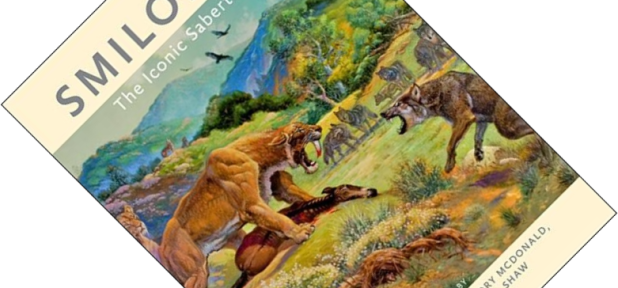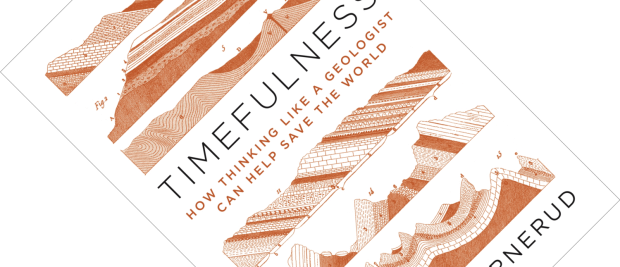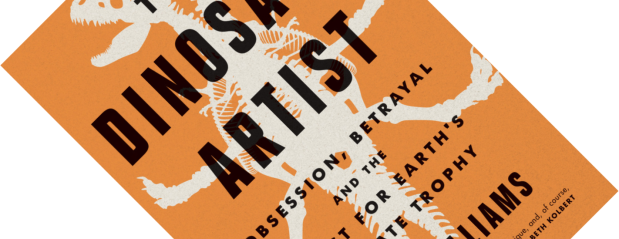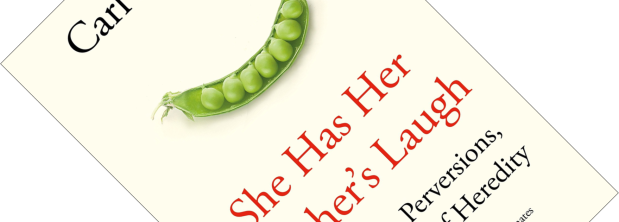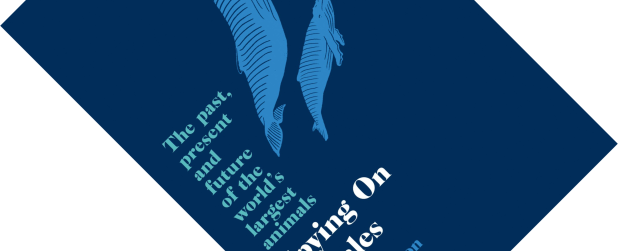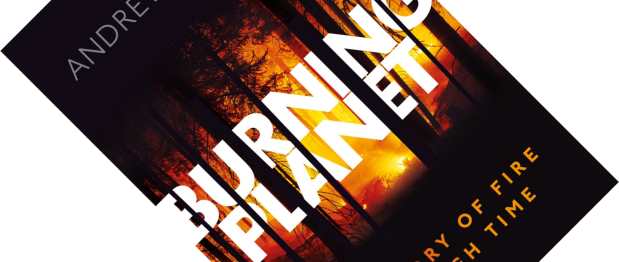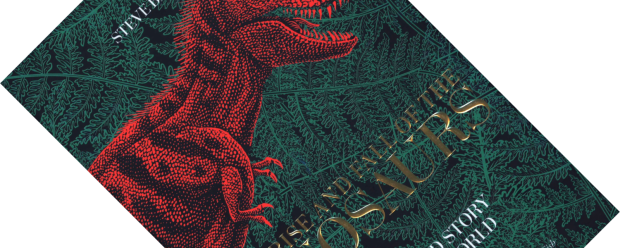When it comes to Ice Age fame, sabertooth cats are right up there with mammoths. And within the sabertooth cats, the best-known group is the genus Smilodon. Even if you have not heard that name, you will very likely have seen it depicted. Rather than a pop-science book, this edited collection brings together the who-is-who of sabertooth palaeontology to provide a thorough and technical overview of the current state of the field. And if I did not know any better, I would say that the research community has developed an almost unhealthy obsession with this cat’s large canine teeth.
fossils
Book review – Timefulness: How Thinking Like a Geologist Can Help Save the World
At first blush, you might think this book is part of the ongoing craze of spiritual mindfulness books. But let me refrain from snarky comments. Geologist Marcia Bjornerud does indeed want to instil a sense of mindfulness about deep time, but one that is, pardon the pun, grounded in geology. In her opinion, most of us lack an awareness of durations of important chapters in our planet’s history and of rates of change of many natural processes. As a consequence, we fail to see just how rapidly we are altering our planet. In one of the first paragraphs she eloquently writes:
“Like inexperienced but overconfident drivers, we accelerate into landscapes and ecosystems with no sense of their long-established traffic patterns, and then react with surprise and indignation when we face the penalties for ignoring natural laws”.
And with that, she had me hooked.
Book review – The Palaeoartist’s Handbook: Recreating Prehistoric Animals in Art
Given that dinosaurs are no longer around, everything you think you know about what they look like comes from illustrations, models, movies, and merchandise. But how much of this is actually accurate, and how much of it is rather geared towards appealing to our sensibilities? Mark Witton is a man with a mission: to elevate the genre of palaeoartistry to one depicting scientifically accurate renditions, based on informed speculation and careful study of fossils and anatomy. Rather than a book that shows you how to draw a dinosaur, The Palaeoartist’s Handbook is a fantastically useful primer for both aficionados and budding artists into what actually can and should go into making good palaeoart.
Book review – The Dinosaur Artist: Obsession, Betrayal, and the Quest for Earth’s Ultimate Trophy
Where do fossils belong? Should they be housed in museums, available for study by scientists to learn more about our planet’s deep history? Or can they be treated like exclusive souvenirs, traded and auctioned on a market that stocks the private collections of rich people? Journalist Paige Williams here tells the full story, warts and all, of a high-profile auction gone awry. She initially reported on this in 2013 in the New Yorker. Up for sale? A fully reconstructed skeleton of Tarbosaurus bataar, the Asian cousin of Tyrannosaurus rex.
Book review – Land Bridges: Ancient Environments, Plant Migrations, and New World Connections
Before plate tectonics became an accepted idea in geology, Lyell’s doctrine of uniformitarianism still ruled supreme (see my review of Cataclysms: A New Geology for the Twenty-First Century for a short introduction). A corollary was that the continents supposedly had always been where they are now. One observation scholars had to explain away was that the same fossils occur on both sides of the various oceans. Looking at maps, some people noticed the thin strip of land connecting North and South America and concluded that land bridges must have formed and sunk beneath the waves at just the right times in history to enable migrations (see Four Revolutions in the Earth Sciences: From Heresy to Truth for more details). As explained in The Tectonic Plates are Moving!, we know better nowadays. Nevertheless, the concept of land bridges is still alive and well today, and palaeobotanist Alan Graham here introduces five of them, exploring their effects on biogeography, climate, and human history.
Book review – She Has Her Mother’s Laugh: The Powers, Perversions, and Potential of Heredity
If Charles Darwin were to walk into my office today and ask me: “So, what did I miss?” I think I would sit the good man down with a copy of She Has Her Mother’s Laugh, telling him: “Here, this should get you up to speed”. Darwin struggled to explain how traits were being inherited from generation to generation. As New York Times columnist Carl Zimmer shows in this wide-ranging book, the story of heredity has turned out to be both diverse and wonderful, but has also been misappropriated to prop up some horrible ideologies.
Book review – Earth History and Palaeogeography
This book is an example of what happens when you go down rabbit holes. I have been reading several books on the subject of palaeontology and geology lately, and I know that the face of the earth has shifted over the hundreds of millions of years of deep history covered in these books. But where were all the continents at different times? Many will have seen the iconic maps of the supercontinent Pangaea. But I want to know more. What happened in between? And before? As Nield tells in Supercontinent: 10 Billion Years in the Life of Our Planet, Pangaea was only one of several such supercontinents in Earth’s history. But I want to know more still. Where exactly were the continents located? And how did they move? Several accessible books have provided snapshots of iconic moments, such as the formation of the Himalayas (Mike Searle’s Colliding Continents: A Geological Exploration of the Himalaya, Karakoram, & Tibet) or the disappearance of the Tethys ocean (Dorrik Stow’s Vanished Ocean: How Tethys Reshaped the World). But I want to know more! This technical reference work contains lots of fantastic palaeogeographical maps that answered all my questions.
Book review – Spying on Whales: The Past, Present and Future of the World’s Largest Animals
It should have been a straightforward expedition. As a young career palaeontologist, Nick Pyenson found himself in the Atacama desert of Chile, tasked with mapping rock layers to establish a continuous chronology that would help dating fossils found in the area. Whale fossils, Pyenson’s speciality, are rarely found complete, which is true of most fossils. So what do you do when a colleague takes you to the construction site of a new highway and shows you not one, not several, but literally dozens of complete fossil whale skeletons? It represented a treasure trove for science, but retrieving the material before the highway constructors would move in was also a daunting, labour-intensive task that could make or break careers. I almost found myself standing next to Pyenson in the dusty clearing, the Chilean sun beating down on me as he faced this dilemma. This is just one of several immersive narratives recounted in Spying on Whales, which successfully blends travelogue and popular science.
Book review – Burning Planet: The Story of Fire Through Time
Fire is a force of nature that both fascinates and frightens. Large wildfires around the world seem to be on the rise and are a cause of concern due to the risk to lives and property. But fire also is an essential part of the workings of our planet that pre-dates humans by a long time. How long? For the last 40 years, geologist and palaeobotanist Andrew C. Scott has researched plant remains in the fossil record that have been preserved by fire in the form of fossil charcoal. In Burning Planet, he takes you on a 400-million-year deep-history tour of fire and how it has shaped our planet.
Book review – The Rise and Fall of the Dinosaurs: The Untold Story of a Lost World
Dinosaurs. You could fill a library with the books written about them. Why write another one? Because the field is moving fast: new fossils are constantly being found, new species are being described, and new techniques allow us to ask completely new questions. Being a young career-palaeontologist at the top of your field is another good reason. And Steve Brusatte does not lack ambition. Rather than singling out any one topic, The Rise and Fall of the Dinosaurs gives you the whole epic story, from the early beginnings right up to the abrupt end. Given the brief Brusatte has set himself he obviously doesn’t cover everything exhaustively, but he succeeds admirably in giving you a very relevant overview of where we are now.

